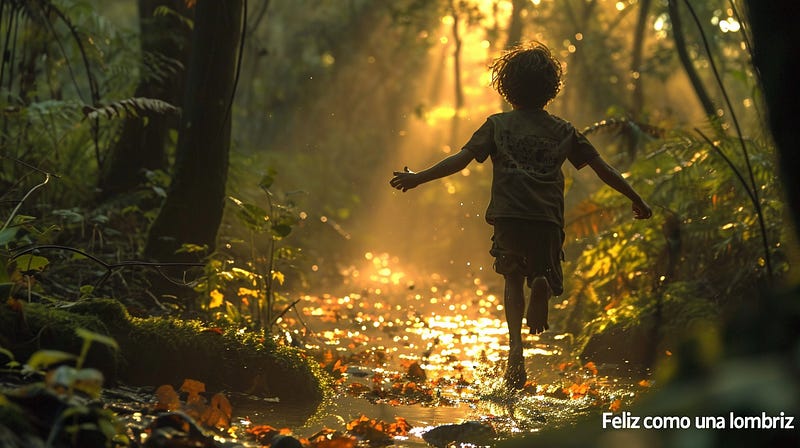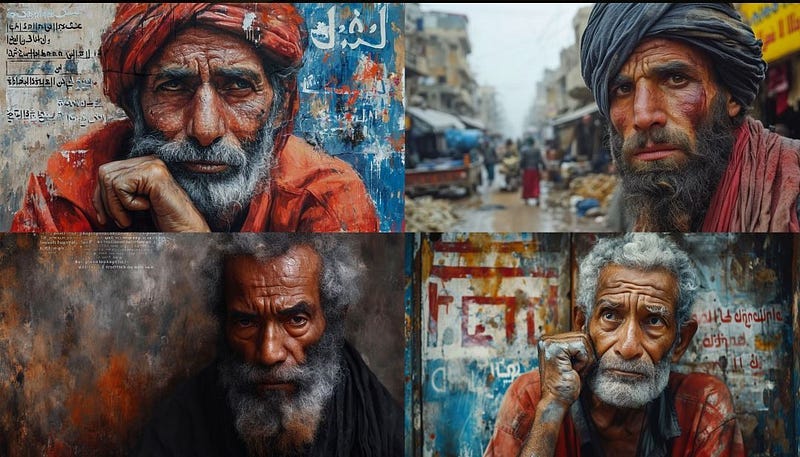Text Generation In Midjourney V6: Is It Really Improved?
Midjourney v6 enters the scene with a plethora of new features.
Midjourney v6 enters the scene with a plethora of new features.
It promises faster upscales, better image quality, improved aesthetics, more sensitivity to prompting, and — my long-awaited bounty — improved text generation.
The tool should now display your slogans effortlessly as long as you explicitly ask for a photo with text and provide the text in quotes.
But does it work like magic? Can Midjourney deliver equally good results in all languages, or only in the default English?
To find the answer, I took Midjourney v6 for a spin. Below you’ll explore how the tool copes with text generation in several languages.
DALL-E 3 or Ideogram AI: Which tool is better to generate images with texts (in 7 languages!)
AI image generators craft breathtaking visuals, but can they also display text correctly?generativeai.pub
1. English
As this is the default language in the world of AI, no tool should struggle with it. Especially Midjourney v6.
To test the enhanced text generation feature, I used two scenarios: one with a longer sentence, and one with a short slogan.
Here are the prompts and the results:
a photo of the text “Enjoy your holiday!” written on a landscape with a wild beach and wooden hut — ar 16:9 — v 6
Four photos, four failures.
Although the images are stunning, the text fails to impress.
To double-check the power of Midjourney, I ran the same prompt, but without the v6 parameter that indicates the new tool version.
The results in v5 were indeed worse.
Since Midjourney v6 failed to generate the short text correctly, I feared it might struggle with the longer sentence as well.
Nevertheless, I ran the second prompt as well:
a photo of the text “Let us enhance your natural glow” written on a portrait of a make-up artist at work — ar 16:9 — v 6
This time 3 out of 4 images contained no text, and one was nearly correct:
Selecting the Vary feature for this image didn’t improve the results much:
2. Spanish
The results for English could have been much better. Still, I thought there was a chance Midjourney would generate impeccable texts in other scenarios. For the second test round, I chose the third most popular language used online (the first is English, second — depending on the source is Russian or Chinese).
a photo of the text “Feliz como una lombriz “ written on a portrait of a boy jumping in paddles in a forest — ar 16:9 — v 6
One out of 4 generated images displayed the text correctly, although the typography wasn’t as appealing as on the images with the English slogans.
Since the results for a short phrase were decent, I hoped the tool would succeed with the longer sentence as well.
a photo of the text “Comer chocolate es cómo enamorarse” written on a close-up of a delicious chocolate — ar 16:9 — v 6.
The images were irresistible, but the text on all four creations was far from perfect. The example above shows the best text version, although it doesn’t display the quoted sentence correctly.
3. Arabic
To raise the bar higher, I asked the tool for a sample of “Abjad”. It was time for Arabic, ranked the eighth language in terms of growth and usage on the internet.
a photo of the text “هذا رائع” written on a landscape with an empty desert with sand dunes — ar 16:9 — v 6
As expected, the tool choked on the Arabic words: one image was generated with no text, one came out with illegible text with Latin characters, and two displayed Arabic-like letters but were nothing more than gibberish.
At least the images were a pleasure to look at.
Without expecting any wonder, I asked Midjourney for a photo with a longer text.
a photo of the text “فكرة جميلة، لكن للأسف لم تنجح” written on a portrait with a sad man — ar 16:9 — v 6
Although the images were breathtaking, there was no text on the two images, and on the other two, it was generated as meaningless Arabic-like script.
Final thoughts
Midjourney v6 is impressive. There’s no doubt about that.
The only downside is the text generation feature. Although it’s much better than in v5, it fails to consistently deliver correct results.
It seems the tool copes well with short slogans, struggles with longer sentences, and refuses to generate non-Latin characters.
Sometimes, you can get better results with the Vary feature. In some cases, you’ll see correctly displayed phrases when you play around with the prompt and text until the tool finally generates what you want. But that might be more time-consuming than uploading the beautiful image generated by Midjourney into another tool such as Photoshop, Photopea, or Canva to add your text manually.
Ready to adapt your content to a local culture and language? As a localization consultant, I can guide you on this fascinating journey.
You can find me on LinkedIn as well.
This story is published on Generative AI. Connect with us on LinkedIn and follow Zeniteq to stay in the loop with the latest AI stories. Let’s shape the future of AI together!














